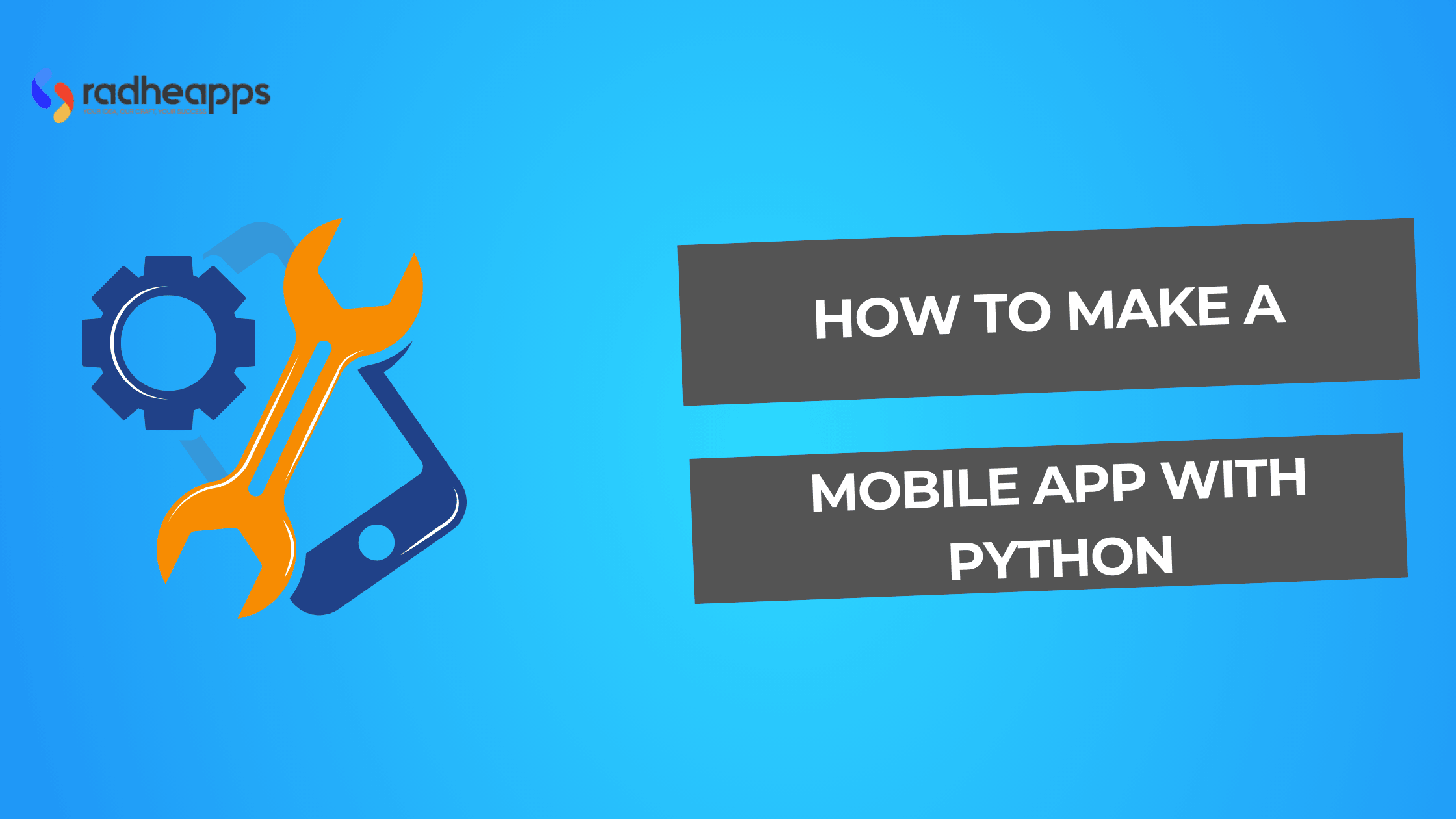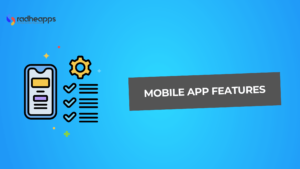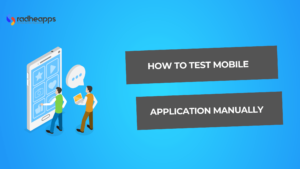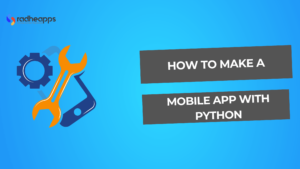Mobile applications are the source of digital transformation. Developers continuously strive to build an efficient mobile app with Python. This is where Python helps developers deploy applications faster with all functions.
Python is developing a reputation as a versatile and flexible programming language. This has made it easier to code than traditional programming languages, such as Swift or Kotlin, which are commonly used in mobile app development.
Developers can now build applications enriched with AI and machine learning for iOS and Android. Python allows businesses to create functional, intelligent, and future-ready mobile applications.
What distinguishes Python in this age of rapid technological development? The ease of coding transcends the language and its capacity to flow seamlessly into changing technology.
Python interacts naturally with AI and machine learning to enable innovative, automated suggestions and personalized user experiences. Moreover, it benefits users by reducing the time it takes to develop cross-platform mobile applications.
Frameworks like Kivy and BeeWare connect Python’s coding syntax with the functional capabilities of iOS and Android applications. These frameworks support cost reduction, rapid development, and ease of coding structure when building mobile applications within prominent startups.
At RadheApps, we leverage the power of Python to craft dynamic, scalable, and high-performing mobile applications customized to your business needs whether you’re planning an AI-driven customer engagement platform or a cloud-integrated business tool.
We are here to deliver your cross-platform mobile app faster. Our team of developers is an expert in any Python-based framework or tool. They ensure that your cutting-edge mobile applications work smoothly in any condition.
Are you ready to turn your app concept into reality? Let’s build something extraordinary together.
What is Python for Mobile Apps?
Python was initially developed for web development, AI, and automation, but it has become popular as a reliable mobile app development framework. While Python is not a native mobile development language like Swift or Kotlin. It is still capable of building practical cross-platform mobile applications.
Python can be used for mobile app development with the help of frameworks that bridge Python code with native mobile languages. These frameworks can compile Python code into native code for Android and iOS. It makes mobile app development easy for developers who are not skilled in platform-specific languages.
Some of the benefits are:
- Cross-platform: Write once and deploy on multiple platforms.
- Rapid Development: Python is a fast development language that makes rapid prototyping and iterations easy.
- Large Ecosystem: Development is quick with an extensive library of built-in plugins.
- AI & Data Science Integration: Better for mobile apps that utilize AI.
Performance is a disadvantage to Python compared to other native programming languages. However, a well-designed app using Python can perform better than other native programming languages.
| Read more: Learn how to find the best mobile app development companies. |
Popular Python Frameworks for Mobile Apps
Kivy
- Kivy is an open-source, cross-platform framework.
- It uses OpenGL for graphics and is suitable for multi-touch applications.
- Works on every platform: Android, iOS, Windows, macOS, and Linux.
- UI can be built using its custom language, Kv.
BeeWare
- BeeWare provides tools for writing Python apps with native UI elements.
- Supports every platform: Android, iOS, macOS, Windows, and Linux.
- Works with Toga UI toolkit for building interfaces.
PySide (Qt for Python)
- PySide leverages the Qt framework to build Python applications with a rich UI.
- It can be used for desktop and mobile applications.
- Offers powerful UI design capabilities with Qt Designer.
PyQt
- PyQt, similar to PySide, offers Qt-based development for mobile and desktop.
- It is more established but has a commercial license for some use cases.
SL4A (Scripting Layer for Android)
- SL4A enables Python scripting on Android devices.
- It helps automate tasks rather than full-scale app development.
How to Build a Mobile App Using Python
Python allows you to build mobile apps using frameworks by reducing the gap between Python and native languages. Here’s a step-by-step guide to developing a mobile app with Python:
Set Up the Development Environment
Before starting, you need to install the necessary tools and dependencies.
Install Python & Dependencies
- Download and install Python (latest stable version) from python.org.
- Install pip (Python package manager) if not already installed.
Install a Python Mobile Framework
Depending on the framework you choose, install it using pip.
For Kivy:
pip install kivy
For BeeWare (Toga UI):
pip install toga
Set Up an Emulator or Mobile Device
- Android: Install Android Studio and set up an emulator.
- iOS: Install Xcode (macOS required) and configure the simulator.
Choose the Right Python Framework
Install a framework based on your requirements:
- Kivy: For cross-platform apps with touch interfaces.
- BeeWare (Toga UI): For native apps.
- PySide/PyQt: For UI-heavy applications.
- SL4A (Scripting Layer for Android): For simple Android automation scripts.
Write and Structure the Code
By structuring your project correctly, a simple Kivy app structure looks like this:
Project Structure
/my_app
│– main.py
│– app.kv# (for Kivy UI design)
│– assets/
│– requirements.txt
Basic Code Example (Kivy Framework)
From kivy.app import App
From kivy.uix.label import Label
Class MyApp(App):
def build(self):
return Label(text=”Hello, World!”)
If __name__ == “__main__”:
MyApp().run()
For BeeWare (Toga UI), an essential app looks like this:
import toga
def say_hello(widget):
print(“Hello, World!”)
def build(app):
main_box = toga.Box()
button = toga.Button(“Click me”, on_press=say_hello)
main_box.add(button)
return main_box
if __name__ == “__main__”:
app = toga.App(“My App”, “org.example.myapp”, startup=build)
app.main_loop()
Test and Debug the App
App testing on different devices and simulators before deploying.
- Run on a Desktop:
python main.py - Run on an Android Emulator (Kivy):
Buildozer Android debug
Debugging Tips:
- Use print() statements to debug logic issues.
- Use Python debugging tools like pdb.
- Test UI responsiveness on different screen sizes.
Deploy the App on Android and iOS
Deploy the app once it is tested for mobile users.
For Android (Using Kivy + Buildozer)
- Install Buildozer:
pip install buildozer - Initialize Buildozer:
buildozer init - Edit buildozer.spec file (set package name, permissions, etc.).
- Compile APK:
buildozer -v android debug - Transfer the APK to a device and install it.
For iOS (Using BeeWare + Briefcase):
- Install Briefcase:
pip install briefcase - Create an iOS project:
Briefcase create iOS - Build and run the app:
Briefcase run iOS - Build and run the app:
- Briefcase run iOS
| Read more: Learn how to do thorough mobile app testing to make an app stable and reliable. |
Best Python Frameworks for Mobile App Development
Below are the best Python frameworks for mobile application development.
Kivy: Features and Use Cases
Kivy is an open-source Python framework that develops multi-touch cross-platform applications.
Key Features of Kivy
- Cross-Platform Compatibility: Write once and deploy across various platforms.
- Customizable UI Components: This offers widgets like buttons, labels, and sliders.
- Graphics Support: Uses OpenGL for rendering. Ideal for graphical applications.
- Multi-Touch Support: Great for interactive applications like games or drawing apps.
- KV Language: A separate UI language (.kv files) to design user interfaces easily.
Use Cases
- Mobile Games – Touch-based applications.
- Data Visualization Apps – Applications displaying complex graphs and charts.
- Prototyping Tools – Quickly test UI/UX concepts.
- Educational Apps – Interactive learning tools for students.
BeeWare: How It Helps in App Development
BeeWare is a framework that offers various tools to build native applications for multiple platforms using the same codebase.
How BeeWare Helps
- BeeWare helps developers create native mobile apps without Java (Android) or Swift.
- Toga UI is a lightweight UI toolkit used to create interfaces.
- Great for business applications and productivity tools.
PySide and PyQt for UI Development
PySide and PyQt are Python bindings for the Qt framework. It is widely used for developing rich graphical user interfaces (GUIs).
Differences Between PySide and PyQt
| Feature | PySide | PyQt |
| License | LGPL (Free for commercial use) | GPL (Requires commercial license) |
| Developer | Qt (official support) | Riverbank Computing |
| API Similarity | Same as Qt | Some API differences from Qt |
Types of Apps You Can Develop with Python
Python is a versatile language that supports the development of various types of applications. These are some key categories of apps you can build using Python.
Gaming Apps
Python is widely used for 2d or 3d game development. Developers can create interactive and engaging gaming apps with their popular game libraries:
- Pygame: For 2D games.
- Panda3D: For 3D games.
- Kivy: For touchscreen-based mobile games.
Business and Enterprise Apps
Python is popular for creating corporate business automation, data management, and enterprise software applications. It provides features such as:
- Scalability: Handles large amounts of data and users.
- Security: Built-in libraries for encryption and secure transactions.
- Integration: Works with databases (MySQL, PostgreSQL), APIs, and cloud services.
AI-Powered Applications
AI is becoming an essential part of app development. Python is the leading language for Artificial Intelligence (AI) and Machine Learning (ML) applications. It offers:
- Rich AI Libraries: TensorFlow, PyTorch, Scikit-learn, etc.
- Natural Language Processing (NLP): Text-to-speech and chatbot capabilities.
- Computer Vision: Facial recognition, object detection, and image processing.
Data-Driven and IoT Applications
Due to its flexibility and integration capabilities, Python is commonly used for data-driven applications and Internet of Things (IoT) solutions. Reasons to use Python for IoT and Data-Driven apps:
- Works with IoT devices: Compatible with Raspberry Pi, Arduino, etc.
- Big Data Processing: Libraries like Pandas and NumPy handle large datasets.
- Real-time Data Analysis: Machine learning models for predictions.
Python vs. Other Languages for Mobile Development
Python is a powerful and versatile language. Let’s compare it to other programming languages like Java for Android and Swift for iOS.
Python vs Java for Android Development
| Feature | Python | Java |
| Performance | Slower, interpreted language | Faster, compiled language |
| Native Support | Not natively supported for Android | Official Android language |
| Ease of Learning | Easier syntax, beginner-friendly | More complex syntax |
| App UI/UX | Uses frameworks like Kivy, BeeWare | Uses Android’s native UI |
| Development Speed | Faster prototyping | More effort is required for the setup |
| Community & Support | Growing, but smaller than Java for mobile | Large developer community |
Python vs Swift for iOS Development
| Feature | Python | Swift |
| Performance | Slower than Swift | Optimized for iOS, fast execution |
| Native Support | Requires frameworks like BeeWare | Official iOS language |
| Ease of Learning | Easier to read and write | Simple but requires an understanding of iOS concepts |
| Development Speed | Faster development cycle | Requires setup with Xcode |
| App UI/UX | Uses Toga (BeeWare) for UI | Native UIKit for smooth performance |
| Community & Support | Growing, but limited for iOS | Large iOS developer support |
When to Use Python Over Other Languages
Python is not the first choice for mobile development, but it offers some better services than a native platform:
Use Python When
- If you need cross-platform mobile app development.
- If you are developing AI, ML, or data-driven applications.
- If you need quick prototyping.
- If your app is backend-heavy and connects to web services.
Avoid Python When
- If you need high-performance, native mobile apps.
- If your app relies on hardware integration.
- If you are targeting a smooth, high-speed UI/UX experience, follow these best practices for UI/UX design and development.
Common Challenges in Python Mobile App Development
While Python is a powerful language, it also comes with challenges. Here are the details of these challenges and solutions.
Performance Optimization Tips
Challenges
Python makes it slower than compiled languages like Java and Swift. Mobile devices have limited CPU and RAM, so inefficient Python code can lead to lagging apps.
Solutions
- Use Cython or PyPy: These tools help compile Python code to C and improve execution speed.
- Optimize Algorithms & Data Structures: It reduces time complexity using efficient coding practices.
- Whenever possible, leverage caching, hardware acceleration and other good ways to optimize the app.
Handle Platform Compatibility
Challenges
Python does not support native for Android or iOS. It requires third-party frameworks. Different screen sizes and resolutions need an adaptive UI design.
Solutions
- Use Cross-Platform Frameworks: Kivy and BeeWare allow building apps for Android and iOS from a single codebase.
- Leverage Native APIs: Use tools like PyJNIus for Android and PyObjC for iOS to access platform-specific features.
Manage Memory and Battery Efficiency
Challenges
Python apps need more memory than Java/Swift counterparts. Frequent garbage collection can slow down the app and drain battery life.
Solutions
- Use Memory Profiling Tools: Track and optimize memory usage using.
- Avoid Unnecessary Objects: Use generators and avoid large data structures in memory.
Trends and Innovations in Python for Mobile Apps
Python is constantly evolving with new technologies that are enhancing its capabilities. Below is a table describing key trends in Python for mobile app development.
| Trend/Innovation | Description | Impact on Mobile App Development |
| AI & Machine Learning Integration | Python’s ML libraries (TensorFlow, PyTorch) enable AI-powered mobile apps. | Enhances user experience with AI-driven recommendations, chatbots, and image recognition. |
| Cross-Platform Development | Frameworks like Kivy and BeeWare allow building apps for both Android & iOS. | Reduces development time and cost by maintaining a single codebase. |
| Faster Performance with PyPy & Cython | PyPy (JIT compilation) and Cython (C extension for Python) improve execution speed. | Makes Python-based mobile apps more efficient and responsive. |
| Cloud-Integrated Mobile Apps | Python frameworks (Flask, FastAPI) help build cloud-based mobile applications. | Enables real-time data synchronization and seamless user access across devices. |
| IoT-Enabled Mobile Apps | Python’s IoT libraries (MicroPython, PySerial) support smart device integration. | Expands mobile app functionality to control IoT devices remotely. |
| Blockchain-Based Apps | Python libraries (web3.py) facilitate secure blockchain and crypto applications. | Strengthens security and transparency in mobile transactions. |
| Augmented Reality (AR) & Virtual Reality (VR) | Python’s AR/VR libraries (Vizard, OpenCV) enable immersive experiences. | Enhances gaming, training, and interactive mobile applications. |
| Progressive Web Apps (PWAs) with Python | Python frameworks like Flask and Django enable PWAs that function like native apps. | Reduces dependency on app stores while maintaining app-like performance. |
| Voice-Controlled Apps | Integration with speech recognition libraries (SpeechRecognition, Vosk). | Enables hands-free interaction with mobile apps. |
Python is continuously transforming in AI, IoT, and cloud-based solutions. While it is a preferable choice for mobile applications, it still faces challenges in performance compared to native languages.
Conclusion
As technology progresses, Python remains a powerful and versatile tool for mobile app development. Its easy incorporation of AI, cross-platform development, and overall ecosystem of libraries empowers organizations to develop new and scalable mobile apps.
Whether it is an AI, a data-driven mobile app, or an IoT mobile-connected experience, Python is an efficient and versatile development choice for both developers and enterprises.
At RadheApps, we use Python’s expertise to build high-quality, engagement-driven mobile applications that grow your business! Our specialist team understands the importance of having a fully functional app today, and we ensure that the application grows as fast as technology changes.
Reach out to RadheApps so we can help turn your idea into a cutting-edge mobile application!
Frequently Asked Questions (FAQs):
Can Python be Used to Build iOS Apps?
If you want to experiment with writing an iOS app in Python for the first time, projects such as BeeWare and Kivy will provide a much more approachable user experience.
What are the Limitations of Python for Mobile Development?
Python is versatile but has a slower execution speed than compiled languages, higher memory consumption, and a weaker ecosystem for native mobile app development than languages like Java or Swift.
Which Python Framework is Best for Beginners in Mobile App Development?
Kivy is a good choice for beginners in Python mobile app development. It offers a user-friendly way to create cross-platform apps.
How Secure is a Python-Based Mobile App?
Several Python libraries, like cryptography and OWASP tools, can enhance security in Python applications.




